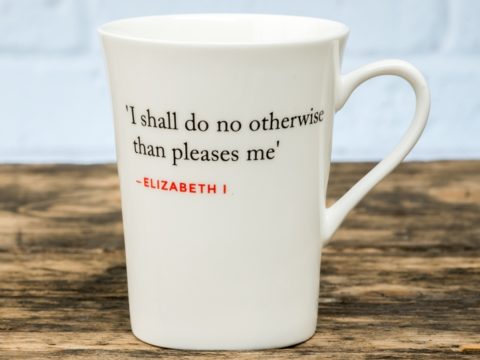James VI & I: Life Story
Chapter 1: Christening to Coronation
It is the usual practice to begin a life story with a birth, but for James, an event which shaped his life completely occurred some two months before he was born.
On 9th March 1566, his mother, Mary, Queen Regnant of Scotland, was having a private meal in her palace of Holyrood, with her half-sister, Jean, Countess of Argyll, various courtiers, and her secretary, an Italian by the name of David Riccio.
Into the midst of the dinner party erupted an armed band, led by the Queen’s husband, Henry Stuart, once Lord Darnley, but given the title, following his marriage, of King of Scots, the Earls of Ruthven and Morton, and at least a dozen of their supporters.
The king held the queen captive whilst Ruthven pointed a loaded pistol at her pregnant belly. Meanwhile, Riccio was dragged, screaming, from her presence, and stabbed over fifty times.
The aftermath of this assassination completely overturned Scottish politics. Mary, always quick thinking and physically courageous, persuaded the king to desert his co-conspirators, and the two of them left Holyrood in secret. They rode for Dunbar, a distance of some thirty miles, which, despite her advanced state of pregnancy, Mary covered in around two hours.
Back in control, Mary banished the assassins, with the exception of her husband, who denied that he had known the plan was to kill Riccio, even though he had actually been the prime mover – instead, he blamed the others. He had deeply offended his wife by his original crime, and now he had betrayed his allies. He had signed his own death warrant.
In June, Mary, who had retired to the safety of Edinburgh Castle, gave birth. Surprisingly, considering the strain she had been under, the birth, although long and painful, resulted in a living child. The news was swiftly sent south to the English court, with Sir James Melville, and to Mary’s French Guise family and the Duchy of Savoy, whose Duke, Emmanuel Philibert, had promised to act as godfather. Services of thanksgiving were held in St Giles’ Kirk.
On 17th December, James was baptised, with a show of ceremony and splendour such as had not been seen in Scotland since the days of the baby’s grandfather, James V. This was the only occasion during her personal rule that Mary raised taxation for expenditure outside the normal business of government – she was determined to show that her son was the legitimate heir to the crown of Scotland, and perhaps also to that of England.
In 1560, during Mary’s absence in France, Protestantism had been instituted by the Estates of Scotland as the state religion. Mary had agreed to respect this, on the understanding that she herself would remain Catholic. The nobility, like the people, were divided between the old religion and the new, but the Protestant Lords, led by Mary’s half-brother, Lord James Stewart, Earl of Moray, had the upper hand in government. They were not best pleased when Mary had James baptised in the Chapel Royal of Stirling with the full ceremonial of the Catholic church, presided over by the Archbishop of St Andrew’s, with three assisting bishops, and the Catholic nobility of Scotland.
As well as the Duke of Savoy, the other godparents were Mary’s brother-in-law, Charles IX of France; Elizabeth I of England, represented by the Earl of Bedford, and the Countess of Argyll. Elizabeth was Mary’s cousin, and Mary had a strong claim to be, if not actually Queen of England (Elizabeth’s legitimacy was questioned by many) then certainly her heir, under the usual laws of English inheritance.
Moray, who had once been in high favour with Queen Mary, until he objected to the marriage with Darnley, was present at Stirling, but refused to attend the ceremony, as did the powerful Earl of Bothwell. The baby’s father, Darnley, although the Queen had expected his presence, and purchased a suit of cloth-of-gold, refused to engage in a ceremony in which he would not be recognised as king. Further controversy arose when the entertainment for the guests included a masque which the English believed insulted them. The dancers were dressed as imps or devils and brandished their tails in such a way that the English took offence.
James VI & I
Family Tree



